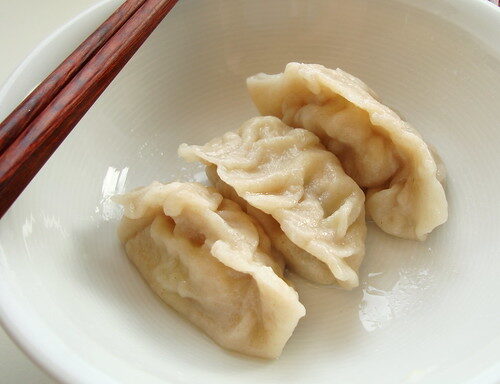
Here is another way to make Chinese dumplings, also known as jiaozi (Mandarin), gau gee or gow gee (Cantonese) or gyoza (Japanese). See also the post on How To Make Chinese Steamed and Pan-fried Dumplings. You might also like to read What are Chinese Dumplings or Jiaozi?, which outlines the various types of Chinese dumplings.
I ate boiled jiaozi regularly when I lived in Beijing, as they are popular in Northern China, and even made them with friends on a few occasions. I still prefer them pan-fried though! My mother says that boiling dumplings is simpler and quicker, and she has never steamed dumplings before, because it takes too long. Here are her tips on how to make the wrappers and boil the dumplings. Of course, if you try a few and decide you prefer to pan-fry them, then please refer to the other recipe for the pan-frying section!

If you make a large quantity of dumplings, you can always freeze them in batches, without boiling them. Then simply defrost and boil or pan-fry when you want to eat them.
Ingredients for dumpling wrappers: (Serves 2. Quantities are a rough estimate only)
- 150g plain flour
- 50g rice flour (optional)
- water
Ingredients for dumpling filling:
- 100g pork fillet
- cabbage (any type you prefer)
- dash of salt
- 2 cloves garlic (if you’re going to cook the filling before wrapping)
- tsp fresh grated ginger (if you’re going to cook the filling before wrapping)
- 2 tbsp Shaohsing wine (if you’re going to cook the filling before wrapping)
- 2 tbsp soy sauce (if you’re going to cook the filling before wrapping)
Ingredients for dipping sauce:
- half a fresh red chilli
- 2 tsp fresh grated ginger
- rice vinegar
- soy sauce
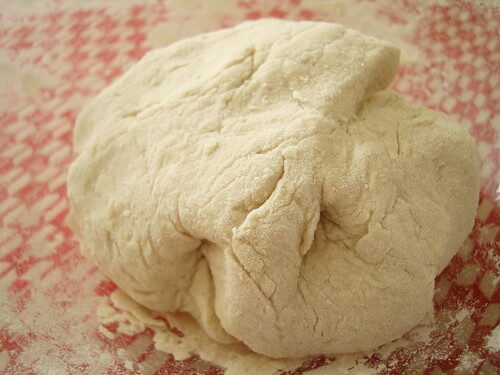
What to do next:
Prepare wrapper dough first-
I used about 150g plain flour with 50g rice flour, but many people make wrappers without the rice flour, so don’t worry if you don’t have it. Too much rice flour will result in the wrapper tearing, however, so be careful with your proportions.
Add water gradually in small amounts, so that you can control the texture of the dough as you knead. Once you start doing this, you’ll be able to judge how much water is required. The dough should not feel too hard, soft or sticky.
Cover dough in bowl with a damp tea towel and leave for 30 minutes. It’s important not to let the dough dry out.
You now have time to prepare the filling and the dipping sauce!
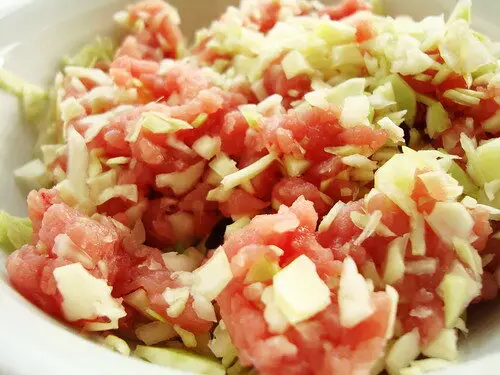
Preparing the filling –
You can use any type of filling you like, but finely chopped cabbage and minced pork is a traditional and tasty combination. If you’re vegetarian, simply choose your favourite vegetables (see recipe for steamed and pan-fried dumplings).
Finely chop cabbage. Mince pork fillet using a sharp knife (a tip is to freeze the fillet, let it thaw for a few minutes, then mince).
You don’t have to do the next step, as most people don’t cook their fillings before wrapping dumplings. But I like to make sure my fillings are cooked, especially where pork is involved, and I find the results are much tastier.
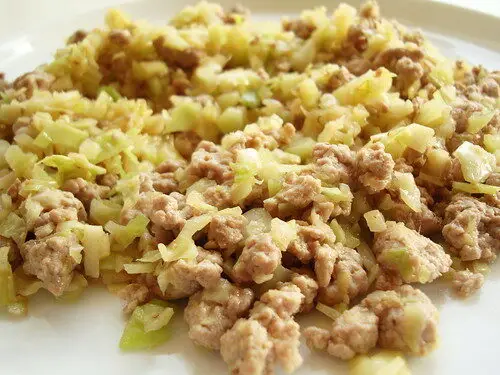
Fry chopped garlic and a teaspoon of grated ginger in some oil. Add the cabbage and pork and stir. Add the Shaohsing wine, soy sauce and salt and continue stirring over low to medium heat for about three or four minutes. Set aside on plate to cool for a few minutes.
Making wrappers & wrapping dumplings –
Knead the dough a little more, making sure the texture isn’t sticky. If it is, don’t worry. Do what I did and rescue it by adding more flour as you roll the wrappers out. Dust surface with some plain flour and cut dough up into small pieces. Form balls and roll them out as thinly as possible (approximately 8cm in diameter). You’ll have to judge the correct thickness. If they’re too thick, they won’t taste nice, and if they’re too thin, the possibility of tearing is greater, especially if you’re going to boil them.
Pour a little water into a shallow dish, to dampen the edges of each wrapper before pleating. Moisten the rim of a wrapper with a dab of water (you’ll know when you’ve used too much). Then place a large teaspoon of filling onto the centre. The wrapper will tear if you use too much filling.
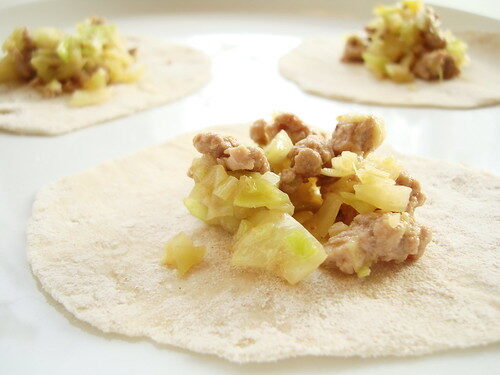
Fold the wrapper in half and press together to form a half moon shape. Pinch and pleat just one side of the wrapper, using your right thumb (if right-handed) to support the other side that will stay smooth. Seal tight so that there are no gaps.
There are many different ways to seal up a dumpling and it will come with practice. Just don’t rush as the wrapper is delicate and will tear.
Boiling dumplings –
Heat plenty of water in a saucepan, adding a little cooking oil, salt and a couple of slices of ginger. Adding oil and salt prevents the dumplings from sticking together.
Boil the dumplings in small batches, so that each one has a chance to cook through properly without ‘overcrowding’ the others. I left the dumplings to boil for 5 to 7 minutes, until the wrappers became soft but not gooey. If you make them in batches, you’ll always have hot ones to eat. There’s nothing worse than a cold dumpling.
Serve hot with plenty of dipping sauce!
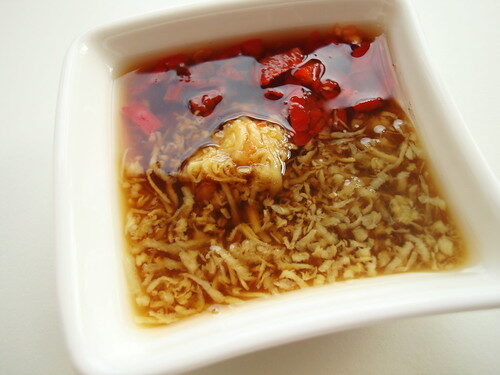
After making the first batch, add some cold water to the saucepan and bring to the boil again, to dilute the water. The flour from the wrappers thickens the cooking water, so the next batch will take longer to cook. Repeat this if necessary after making each batch.
Let me know which version you like most – boiled, steamed or pan-fried dumplings!
Click for all Chinese recipes on Lay The Table
@ Lay The Table